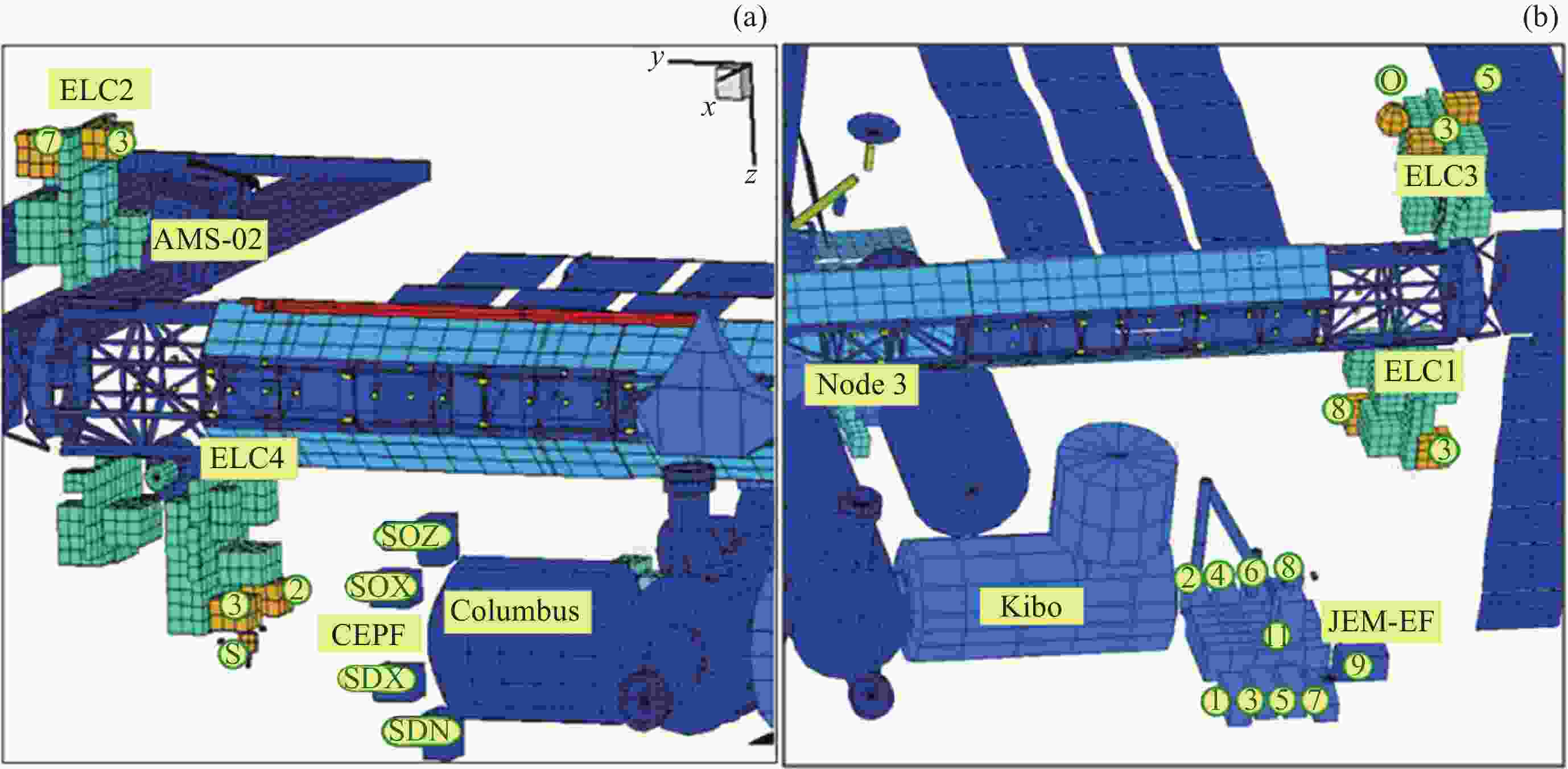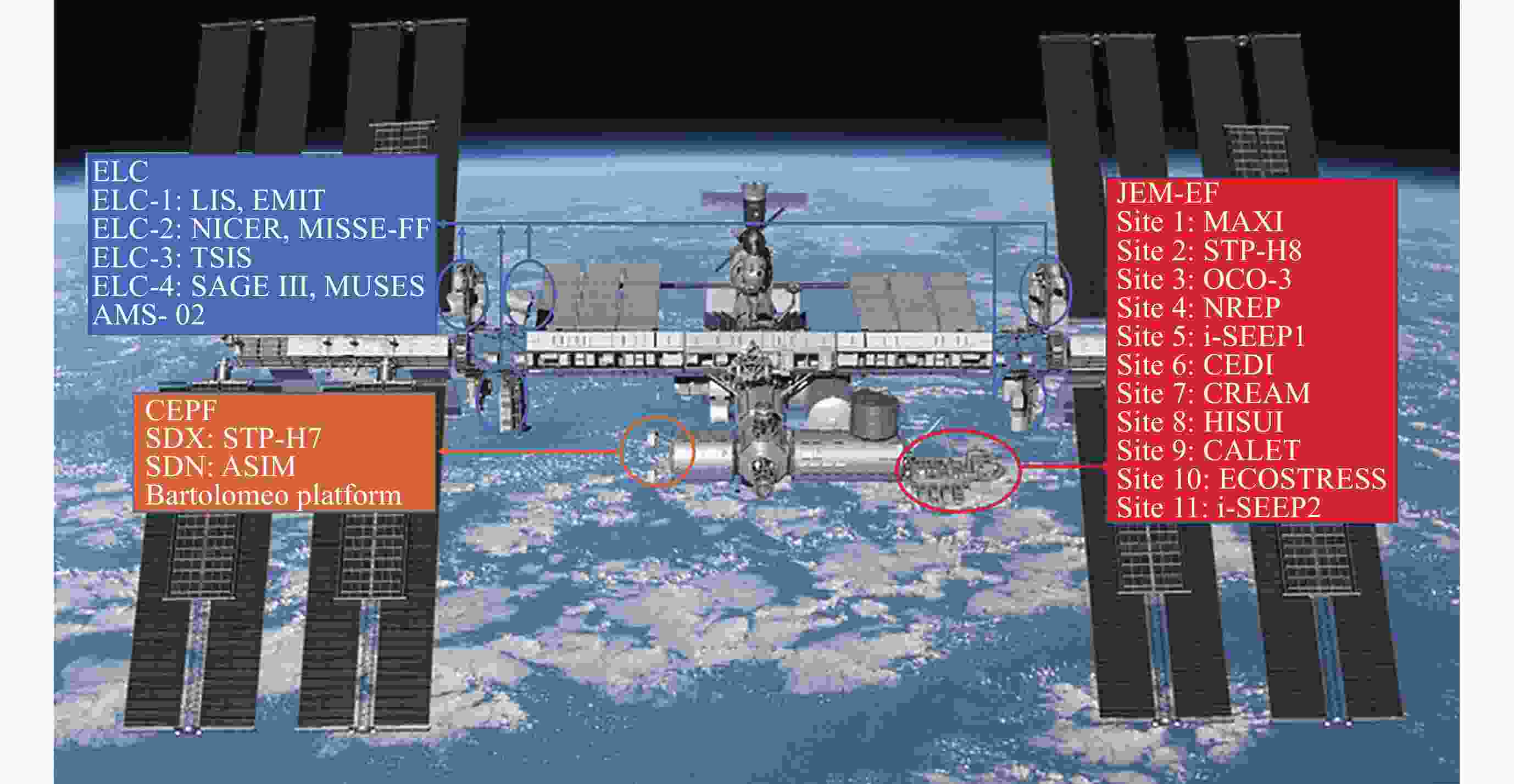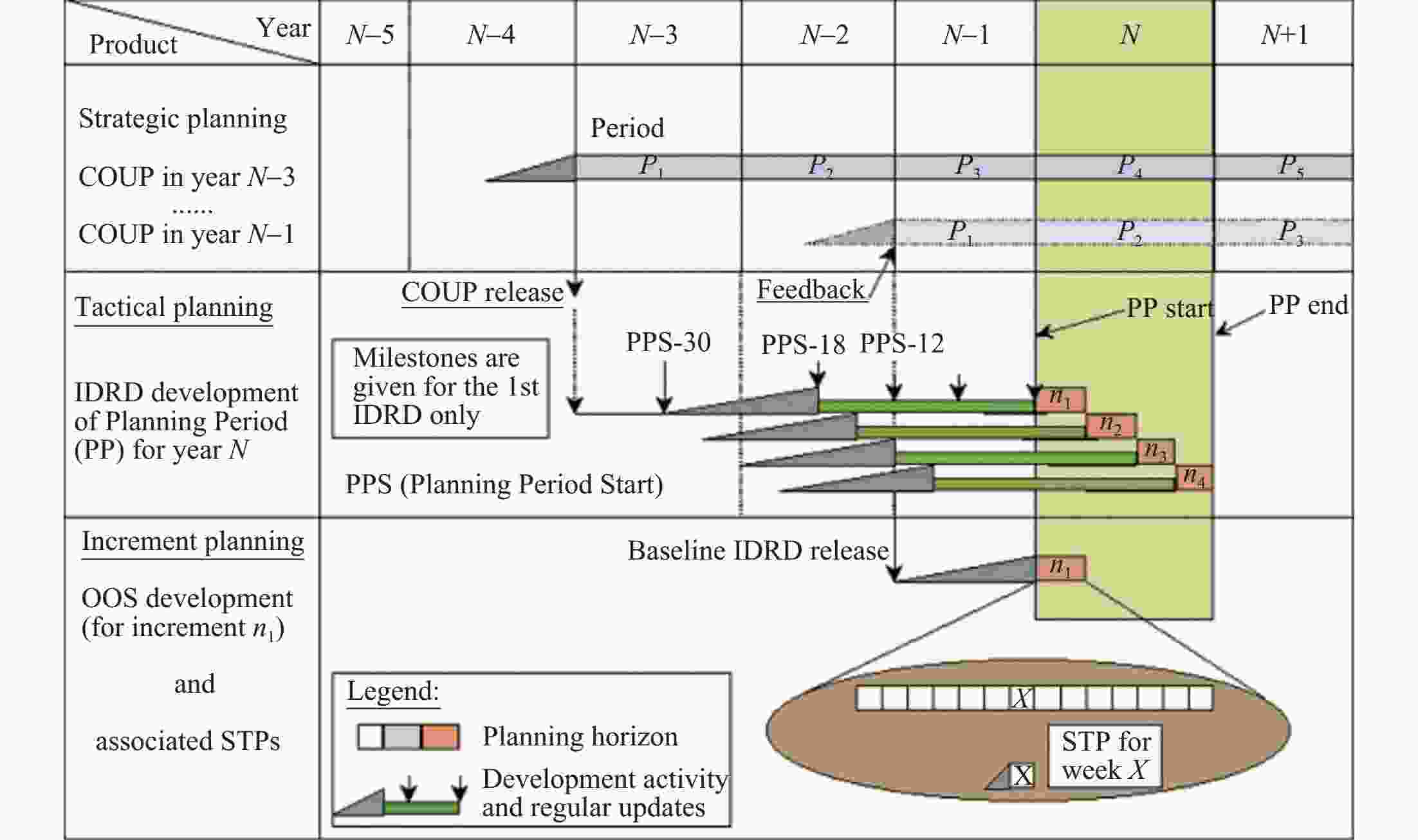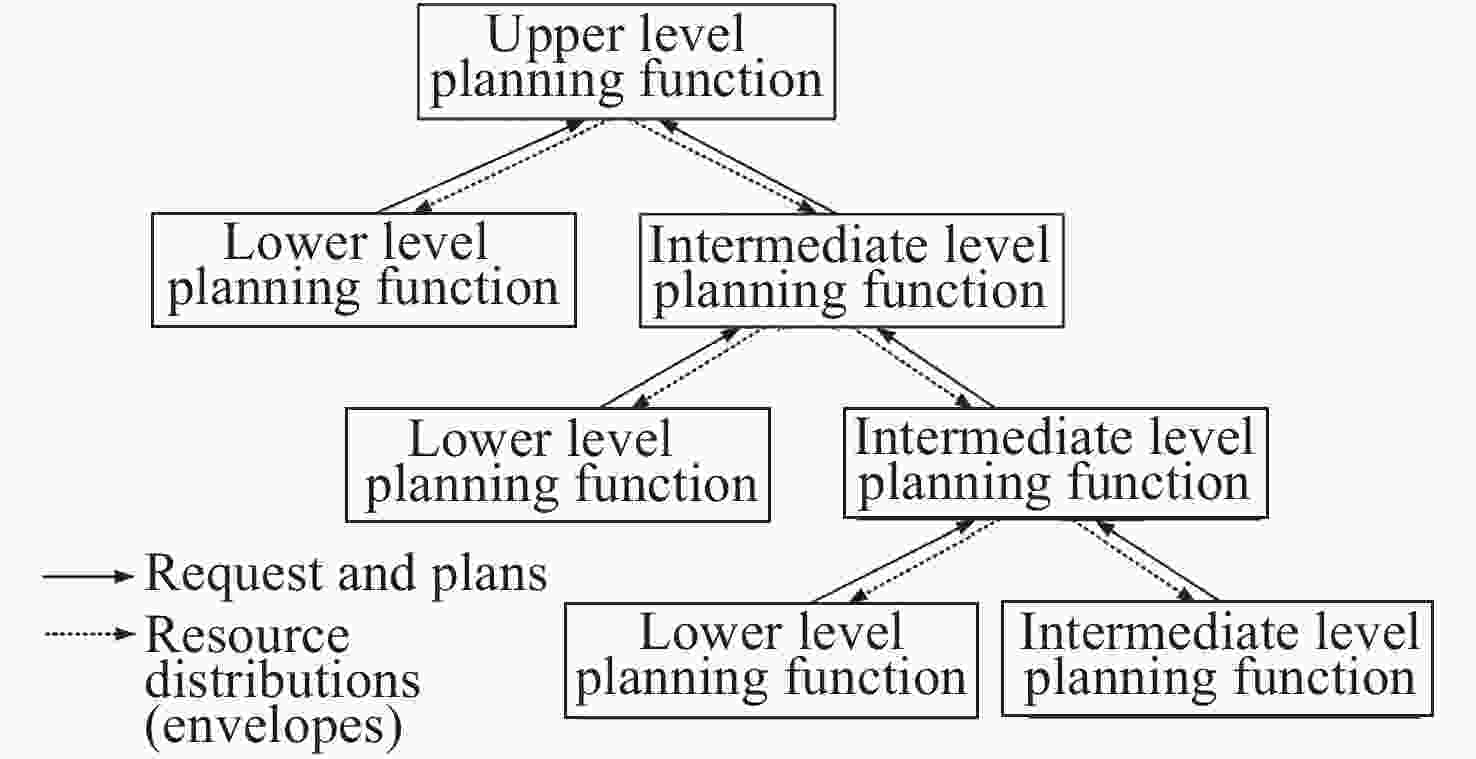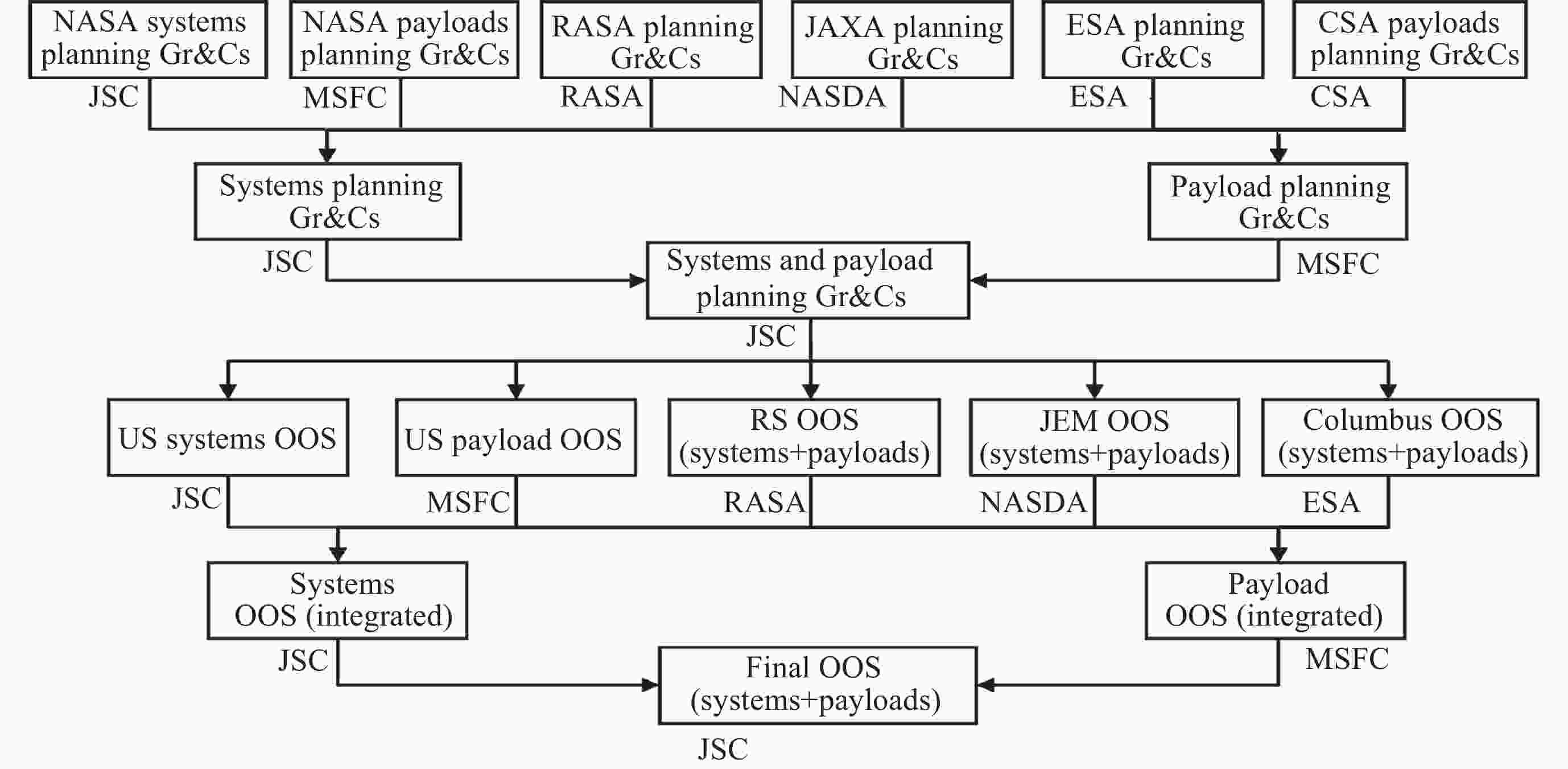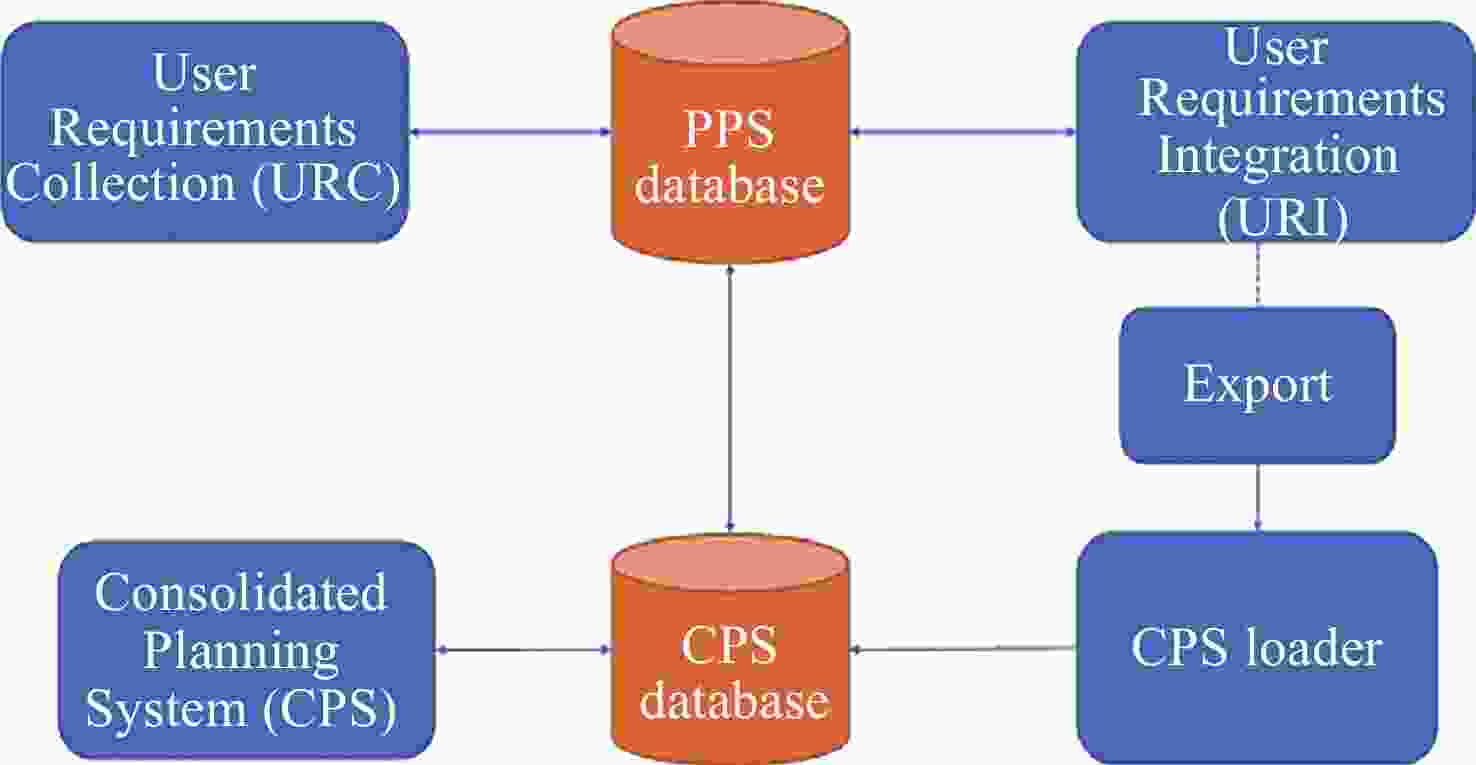International Space Station External Multi-payload Operational Mission Planning
-
摘要: 空间站舱外载荷平台支持部署众多不同类型的载荷, 为开展大规模空间科学研究提供了机会. 但随着舱外载荷数量及相应任务量的不断增加, 且在受限于资源约束的情况下, 需要制定科学合理的任务规划, 以提高舱外载荷的工作效率. 针对舱外多载荷运行任务规划方法, 深入分析了国际空间站舱外载荷任务规划现状, 重点分析了其舱外载荷平台、载荷类型及特点和多载荷运行任务规划方法, 分析当前任务规划策略、方法及未来发展方向. 根据中国空间站舱外载荷平台特点, 从载荷总体设计和运行任务规划方法等方面为中国空间站后续舱外多载荷系统运行任务规划提供参考和建议.Abstract: The external payload platform of the space station supports the deployment of many different types of payloads, which provides opportunities for massive space scientific research. However, with the continuous increasing number of external payloads and corresponding number of missions, and limited by resource constraints, it is necessary to develop scientific and reasonable mission planning to improve the operational efficiency of external payloads and the output of the science benefit. In this paper, the status of mission planning for external payloads on the International Space Station (ISS) is comprehensively analyzed, focusing on the external payload platform, payload types and characteristics, and methods for multi-payload operation mission planning. The current mission planning strategies, methods, and future development directions are analyzed. Based on the characteristics of the external payload platform of the China’s Space Station (CSS), this paper provides reference and suggestions for the subsequent mission planning of multi-payload system operation on the China’s Space Station from the aspects of overall payload design and mission planning methods.
-
表 1 ISS美国舱段舱外载荷平台信息
Table 1. Information of ISS USOS external payload platform
类型 ELC JEM-EF CEPF 入轨时间(年) 2009-2011 2008 2008 容积/m3 1.2 1.5 1.2 承重质量/kg 227 550/2 250 230 电能/kW 0.75 3/6 2.5 热控方式 被动热控 主动热控 被动热控 通信容量/(Mbit·s–1) 1~6 100 1/2 美国共享数/总工位数 8/8 5/10 2/4 平台位置 桁架P3/ S3上下 希望号舱左舷 哥伦布号舱右舷 表 2 美国舱段舱外载荷信息
Table 2. Information of USOS external payloads
涉及学科 载荷名称 安装时间 任务概况 先前载荷 空间天文
与环境全天区X射线探测仪MAXI[13] 2009年 宽能量带X射线全天区扫描观测 SEDA: 运行轨道空间环境测
量[19]
SOLAR: 太阳辐照度测量[20]阿尔法磁谱仪AMS-02[14] 2011年 反物质与暗物质宇宙射线高精度测量 CALorimetric电子望远镜CALET[15] 2015年 高能宇宙射线测量 宇宙线和暗物质探测器CREAM[16] 2017年 宽能量带宇宙射线测量 中子星内部成分探测器NICER[17] 2017年 中子星结构、能量研究 太阳总辐照度测量仪TSIS[18] 2017年 太阳辐照地球能量测量 空间地球
科学商业平台NREP 2016年 地球观测 SMILES: 偏北极区平流层臭氧分布[32]
HICO: 沿海区域观测[33]
CATS: 云和气溶胶雷达测量[34]
RapidScat: 海洋风雷达测量[35]
HDEV: 高清地球观测[36]
GEROS: 地表/海洋雷达测量[37]小型可更换暴露实验平台
i-SEEP1[21] [22]2016年 MOLI多观测激光雷达成像仪、iSIM地球观测等实验 闪电成像仪LIS[23] 2017年 闪电昼夜监测, 研究气候与
空气质量平流层气溶胶和气体实验
SAGE Ⅲ[24]2017年 平流层气溶胶和臭氧分布测量 地球观测多用户系统平台MUSES[25] 2017年 DESIS遥感成像仪等对地观测 大气–空间相互作用监测仪ASIM[26] 2018年 强雷暴及其在地球和气候中的作用研究 生态系统热辐射计ECOSTRESS[27] 2018年 生态系统温度监测, 研究植物对气候变化的影响 全球生态系统动态监测仪GEDI[28] 2018年 森林高度和结构测量, 研究碳循环对生态系统的影响 轨道碳观测仪OCO-3[29] 2019年 地球CO2分布观测 高光谱成像仪HISUI[30] 2019年 地球资源高光谱遥感观测 Bartolomeo平台 2020年 外部载荷商用平台 地表矿物尘源监测仪EMIT[31] 2022年 地球系统矿物尘埃测量 空间应用
新技术空间测试计划STP-H7[38] 2022年 CASPR先进计算和传感实验
系统、Falcon Neuro神经形态相
机技术、GAGG-1新型射线测量
技术、LASSO局部空间观测技术、OSVW海洋风监测、PIANO成像与夜间观测技术SIMPLE: 空间充气膜长期实
验[40]
ICS-EF: 轨道间通信试验
J-SSOD: 立方星发射技术[41]
SDS: 空间碎片传感技术[42]
RRM3: 自主交会捕获及在轨服务技术试验[43]
OPALS: 激光通信试验[44]
ScaN: 空间通信与导航试验[45]
STP-H 系列先进技术试验空间测试计划STP-H8[39] 2022年 COWVR海洋风测量、GAGG-2新型射线测量技术、TEMPEST大气湿度测量 空间科学
实验商业平台NREP 2016年 先进电子器件与材料暴露实验 MISSE-X系列材料暴露试验[5]
EXPOSE-E/R/R2辐射生物实
验[46-48]
ExHAM系列实验(织物传感器、天线金属网、聚合物辐射屏蔽实验、生物暴露实验)[49]国际空间站材料实验
MISSE-FF2018年 材料和设备暴露研究 小型可更换暴露实验平台
i-SEEP22022年 多类型实验 表 3 四个规划层级的具体内容
Table 3. Specific content of the four planning levels
规划层级 开始时间 覆盖时段 输入内容 输出结果 与载荷任务规划相关的内容 战略级规划 PPS-60 5年 长周期空间站运行和资源信息 COUP 规划准则与约束、长周期应用计划、
高层级载荷项目清单与年度资源分配战术级规划 PPS-30 1年 平台资源信息、载荷利用需求、COUP IDRD 任务优先级、各增量期载荷清单与资源分配 任务级规划 PPS-18 增量期 IDRD OOS 每日载荷工作计划 执行级规划 PPS-1 每天 OOS、临近任务开始的资源信息 STP,OSTP 一周内具体到时刻的载荷工作日程 -
[1] GAO M, ZHAO G H, GU Y D. Recent progress in space science and applications of China’s Space Station in 2020-2022[J]. Chinese Journal of Space Science, 2022, 42(4): 503-510 doi: 10.11728/cjss2022.04.yg29 [2] CHINA Manned Space Agency. Scientific Experiment Resource Manual of China’s Space Station[R]. Beijing: China Ma-nned Space Agency, 2019 [3] NAHAY E. Space Station payload operations-The challenge of segmented planning in a continuous operations environme-nt[C]//Space Programs and Technologies Conference. Huntsvile: AIAA, 1995: 3536 [4] COOLEY V M. Unique offerings of the ISS as an Earth observing platform[C]//International Astronautical Congress. Bei-jing: IAF, 2013 [5] THIBEAULT S A, COOKE S A, ASHE M P, et al. MISSE-X: an ISS external platform for space environmental studies in the post-shuttle era[C]//2011 Aerospace Conference. Big Sky, MT, USA: IEEE, 2011: 1-13 [6] SOROKIN I V, KONOSHENKO V P, MARKOV A V. Research potential of the ISS Nauka module[J]. Acta Astronautica, 2022, 198: 777-784 doi: 10.1016/j.actaastro.2022.01.044 [7] JOHNSON Space Center. External Payloads Proposer’S Guide to the International Space Station[R]. Houston: Johnson S-pace Center, 2016 [8] CORLEY B, STEIMLE C. New Bartolomeo payload platform on the International Space Station[C]//AIAA SCITECH 20-22 Forum. San Diego: AIAA, 2022 [9] KAWASAKI K. Overview of JEM-EF on ISS[C]//Proceedings of the RIKEN Symposium. Saitama: JAXA, 2008: 1-3 [10] BACHOLLE S, BARRILLON P, BATTISTI M, et al. Mini-EUSO mission to study Earth UV emissions on board the ISS[J]. The Astrophysical Journal Supplement Series, 2021, 253(2): 36 doi: 10.3847/1538-4365/abd93d [11] BECKETT K. UrtheCast second-generation EARTH observation sensors[J]. The International Archives of the Photogram-metry, Remote Sensing and Spatial Information Sciences, 2015, XL-7/W3: 1069-1073 [12] BERGER T, HAJEK M, BILSKI P, et al. Cosmic radiation exposure of biological test systems during the EXPOSE-R mis-sion[J]. International Journal of Astrobiology, 2015, 14(1): 27-32 doi: 10.1017/S1473550414000548 [13] PIKE S N, NEGORO H, TOMSICK J A, et al. MAXI and NuSTAR observations of the faint X-ray transient MAXI J1848015 in the GLIMPSE-C01 Cluster[J]. The Astrophysical Journal, 2022, 927(2): 190 doi: 10.3847/1538-4357/ac5258 [14] ZUCCON P. AMS-02 experiment: status and perspectives[J]. Nuclear and Particle Physics Proceedings, 2019, 306-308: 74-79 doi: 10.1016/j.nuclphysbps.2019.07.011 [15] ASAOKA Y, OZAWA S, TORII S, et al. On-orbit operations and offline data processing of CALET onboard the ISS[J]. A-stroparticle Physics, 2018, 100: 29-37 doi: 10.1016/j.astropartphys.2018.02.010 [16] ZHANG H G, ANGELASZEK D, COPLEY M, et al. Performance of the ISS-CREAM calorimeter in a calibration beam test[J]. Astroparticle Physics, 2021, 130: 102583 doi: 10.1016/j.astropartphys.2021.102583 [17] ARZOUMANIAN Z, GENDREAU K C, BAKER C L, et al. The Neutron Star Interior Composition Explorer (NICER): mission definition[C]//Space Telescopes and Instrumentation 2014: Ultraviolet to Gamma Ray. Montréal, Quebec, Canada: SPIE, 2014: 579-587 [18] BROWN P, ENGELMANN A. TSIS experiences with ISS Jitter from inception to On-Orbit Operation[C]//Annual Guida-nce and Control Conference. Breckenridge, Colorado, USA: AAS, 2019 [19] OBARA T. Space environment data acquisition with KIBO exposed facility on the International Space Station (ISS)[J]. El-ectronics Communications in Japan, 2012, 95(9): 10-16 [20] MARIEN G, JACOBS C, MICHEL A, et al. SOLAR, 9 years of operations as external payload on the ISS: The technical challenges overcome[C]//2018 SpaceOps Conference. Marseille: AIAA, 2018 [21] SAKAIZAWA D, MITSUHAHI R, MUROOKA J, et al. Current status of the ISS-vegetation lidar Mission-MOLI[C]//IG-ARSS 2018-2018 IEEE International Geoscience and Remote Sensing Symposium. Valencia: IEEE, 2018: 1861-1864 [22] GUZMÁN R, DAVIS S, OCERIN E, et al. In-Orbit demonstration of the iSIM-170 optical payload onboard the ISS[C]//S-mall Satellite Conference. Logan: Utah State University, 2020 [23] BLAKESLEE R J, LANG T J, KOSHAK W J, et al. Three years of the Lightning Imaging Sensor on-board the Internatio-nal Space Station: expanded global coverage and enhanced applications[J]. Journal of Geophysical Research: Atmospher-es, 2020, 125(16): e2020JD032918 doi: 10.1029/2020JD032918 [24] LILES K A K, AMUNDSEN R M, DAVIS W T, et al. Thermal design and analysis of an ISS science payload-SAGE III on ISS[C]//47th International Conference on Environmental Systems. Charleston: ICES, 2017 [25] MÜLLER R, AVBELJ J, CARMONA E, et al. The new hyperspectral sensor DESIS on the multi-payload platform MUS-ES installed on the ISS[J]. The International Archives of the Photogrammetry, Remote Sensing and Spatial Information Sciences, 2016, XLI-B1: 461-467 doi: 10.5194/isprs-archives-XLI-B1-461-2016 [26] NEUBERT T, ØSTGAARD N, REGLERO V, et al. The ASIM mission on the International Space Station[J]. Space Scien-ce Reviews, 2019, 215(2): 26 doi: 10.1007/s11214-019-0592-z [27] YELAMANCHILI A, CHIEN S, CAWSE-NICHOLSON K, et al. Automated policy-based scheduling for the ECOSTRE-SS mission[C]//Earth Science Technology Forum. Pasadena: NASA, 2019 [28] DUBAYAH R, BLAIR J B, GOETZ S, et al. The Global Ecosystem Dynamics Investigation: High-resolution laser ranging of the Earth’s forests and topography[J]. Science of remote sensing, 2020, 1: 100002 doi: 10.1016/j.srs.2020.100002 [29] BASILIO R R, BENNETT M W, ELDERING A, et al. Orbiting Carbon Observatory-3 (OCO-3), remote sensing from the International Space Station (ISS)[C]//Sensors, Systems, and Next-Generation Satellites XXIII. Strasbourg, France: SPIE, 2019, 11151: 42-55 [30] MATSUNAGA T, IWASAKI A, TACHIKAWA T, et al. Hyperspectral Imager Suite (HISUI): its launch and current status[C]//IGARSS 2020-2020 IEEE International Geoscience and Remote Sensing Symposium. Waikoloa: IEEE, 2020: 3272-3273 [31] GREEN R O. The NASA Earth venture instrument, Earth surface Mineral dust source investigation (EMIT)[C]//IGARSS 2022-2022 IEEE International Geoscience and Remote Sensing Symposium. Kuala Lumpur, Malaysia: IEEE, 2022: 5004-5006 [32] SHIOTANI M, SAITO A, SAKAZAKI T, et al. A proposal for satellite observation of the whole atmosphere-Superconduc-ting Submillimeter-Wave Limb-Emission Sounder (SMILES-2)[C]//IGARSS 2019-2019 IEEE International Geoscience and Remote Sensing Symposium. Yokohama, Japan: IEEE, 2019: 8788-8791 [33] HU C M. Hyperspectral reflectance spectra of floating matters derived from Hyperspectral Imager for the Coastal Ocean (HICO) observations[J]. Earth System Science Data, 2022, 14(3): 1183-1192 doi: 10.5194/essd-14-1183-2022 [34] YORKS J E, SELMER P A, KUPCHOCK A, et al. Aerosol and cloud detection using machine learning algorithms and sp-ace-based lidar data[J]. Atmosphere, 2021, 12(5): 606 doi: 10.3390/atmos12050606 [35] DURDEN S L, PERKOVIC-MARTIN D. The RapidScat ocean winds scatterometer: A radar system engineering perspect-ive[J]. IEEE Geoscience and Remote Sensing Magazine, 2017, 5(3): 36-43 doi: 10.1109/MGRS.2017.2678999 [36] MURI P, RUNCO S, FONTANOT C, et al. The high definition earth viewing (HDEV) payload[C]//2017 IEEE Aerospace Conference. Big Sky, MT, USA: IEEE, 2017: 1-7 [37] WICKERT J, CARDELLACH E, MARTÍN-NEIRA M, et al. GEROS-ISS: GNSS reflectometry, radio occultation, and sc-atterometry onboard the international space station[J]. IEEE Journal of selected topics in applied Earth observations and Remote Sensing, 2016, 9(10): 4552-4581 doi: 10.1109/JSTARS.2016.2614428 [38] ROFFE S, SCHWARZ T, COOK T, et al. CASPR: Autonomous sensor processing experiment for STP-H7[C]//Proceedin-gs of the AIAA/USU Small Satellite Conference. Logan: Utah State University, 2020 [39] BROWN S, FOCARDI P, KITIYAKARA A, et al. The COWVR Mission: Demonstrating the capability of a new generati-on of small satellite weather sensors[C]//2017 IEEE Aerospace Conference. Big Sky, MT, USA: IEEE, 2017: 1-7 [40] AOKI T, HIGUCHI K, WATANABE K, et al. Progress report of simple space experiment project on ISS Japan experiment module[J]. Transactions of The Japan Society For Aeronautical And Space Sciences, Aerospace Technology Japan, 2014, 12(ists29): Tc_1-Tc_6 doi: 10.2322/tastj.12.Tc_1 [41] AKAGI H, TAKATA M, WATANABE H, et al. Kibo’s contribution to broadening the possibilities for micro-satellite[C]// 2016 SpaceOps Conference. Deajeon: AIAA, 2016 [42] ANZ-MEADOR P, WARD M, MANIS A, et al. The space debris sensor experiment[C]//International Orbital Debris (IOC) Conference. Sugar Land, Texas, USA: NASA, 2019 [43] TOMLINSON Z, GALLAGHER W, CASSIDY J, et al. Lessons for Future In-Space Telerobotic Servicing from Robotic Re-fueling Mission[C]//2022 IEEE Aerospace Conference (AERO). Big Sky, MT, USA: IEEE, 2022: 1-17 [44] SINDIY O, ABRAHAMSON M, BISWAS A, et al. Lessons learned from Optical Payload for Lasercomm Science (OPALS) mission operations[C]//AIAA SPACE 2015 Conference and Exposition. Los Angeles: AIAA, 2015 [45] REINHART R C, KACPURA T J, JOHNSON S K, et al. NASA’s space communications and navigation test bed aboard t-he international space station[J]. IEEE Aerospace and Electronic Systems Magazine, 2013, 28(4): 4-15 doi: 10.1109/MAES.2013.6506824 [46] RABBOW E, RETTBERG P, BARCZYK S, et al. EXPOSE-E: an ESA astrobiology mission 1.5 years in space[J]. Astrob-iology, 2012, 12(5): 374-386 doi: 10.1089/ast.2011.0760 [47] RABBOW E, RETTBERG P, BARCZYK S, et al. The astrobiological mission EXPOSE-R on board of the International Space Station[J]. International Journal of Astrobiology, 2015, 14(1): 3-16 doi: 10.1017/S1473550414000202 [48] RABBOW E, RETTBERG P, PARPART A, et al. EXPOSE-R2: the astrobiological ESA mission on board of the Internati-onal Space Station[J]. Frontiers in Microbiology, 2017, 8: 1533 doi: 10.3389/fmicb.2017.01533 [49] YAMAGISHI A, HASHIMOTO H, YANO H, et al. Four-year operation of Tanpopo: astrobiology exposure and micromet-eoroid capture experiments on the JEM exposed facility of the International Space Station[J]. Astrobiology, 2021, 21(12): 1461-1472 doi: 10.1089/ast.2020.2430 [50] 顾逸东. 关于空间科学发展的一些思考[J]. 中国科学院院刊, 2022, 37(8): 1031-1049GU Yidong. Thoughts on space science development[J]. Bulletin of Chinese Academy of Sciences, 2022, 37(8): 1031-1049 [51] POPOV A. Mission planning on the international space station program, concepts and systems[C]//2003 IEEE Aerospace Conference Proceedings. Big Sky, MT, USA: IEEE, 2003: 3427-3434 [52] LEUTTGENS R, VOLPP J. Operations planning for the International Space Station[J]. ESA bulletin, 1998, 94: 1-7 [53] HAGOPIAN J, MAXWELL T, REED T. A distributed planning concept for Space Station payload operations[C]//NASA Conference Publication. Washington: NASA, 1994: 287-294 [54] HORVATH T, GRIMALDI R, MORRIS D, et al. History of POIC capabilities and limitations to conduct International Sp-ace Station payload operations[C]//AIAA Space 2011 Conference and Exposition. Long Beach: AIAA, 2011 [55] MAXWELL T G. Lessons learned in developing multiple distributed planning systems for the International Space Station [C]//2002 SpaceOps Conference. Houston: AIAA, 2002 [56] SAINT R. Lessons learned in developing an international planning software system[C]//2002 SpaceOps Conference. Hou-ston: AIAA, 2002 [57] MAXWELL T, HOWELL E. Planning as a precursor to scheduling for Space Station payload operations[C]//Space Progr-ams and Technologies Conference. Huntsvile: AIAA, 1995 [58] 张泽旭, 李瑞雪. 国际空间站智能在轨运行进展及启示[J]. 空间科学学报, 2021, 41(1): 118-128 doi: 10.11728/cjss2021.01.118ZHANG Zexu, LI Ruixue. Progress and enlightenment of intelligent on-orbit operation of International Space Station[J]. Chinese Journal of Space Science, 2021, 41(1): 118-128 doi: 10.11728/cjss2021.01.118 [59] MUERY K, FOSHEE M, MARSH A. Automated derivation of complex system constraints from user requirements[C]//2nd IEEE International Conference on Space Mission Challenges for Information Technology (SMC-IT'06). Pasadena: IEEE, 2006: 6-412 [60] KLAI S, MICHEL A, MOREAU D, et al. SOLAR Predictor: A knowledge management tool supporting long term console operations[C]//2014 SpaceOps Conference. Pasadena: AIAA, 2014 [61] STRUYVEN K, BRUN N, DIAZ A. A planning tool for ISS payload operations and preparations[C]//2018 SpaceOps Con-ference. Marseille: AIAA, 2018 [62] LEUOTH K, SABATH D, SOELLNER G. Consolidating Columbus operations and looking for new frontiers[C]//Internat-ional Astronautical Congress. Jerusalem, Israel: IAF, 2015 [63] PEDOTO R, ALBERS C M, BENJAMIN D, et al. Innovative development of a cross-center timeline planning tool[C]//2018 SpaceOps Conference. Marseille: AIAA, 2018 [64] KNIGHT R, HU S. Compressed Large-scale Activity Scheduling and Planning (CLASP) applied to DESDynI[C]//Procee-dings of the Sixth International Workshop in Planning and Scheduling for Space (IWPSS-2009). Pasadena, California: As-sociation for the Advancement of Artificial Intelligence, 2009 [65] DOUBLEDAY J R. Three petabytes or bust: planning science observations for NISAR[C]//Earth Observing Missions and Sensors: Development, Implementation, and Characterization IV. New Delhi, India: SPIE, 2016: 1-7 [66] YELAMANCHILI A, CHIEN S, MOY A, et al. Automated science scheduling for the ECOSTRESS mission[C]//Schedul-ing and Planning Applications Workshop. Berkeley, USA: ICAPS, 2019 [67] YELAMANCHILI A, WELLS C, CHIEN S, et al. Scheduling and operations of the orbiting carbon observatory-3 mission[C]//Scheduling and Planning Applications Workshop. Guangzhou, China: ICAPS, 2021 -
-





 单亚东:男, 1995年8月生于河南省周口市. 现为中国科学院大学博士研究生, 培养单位为中国科学院空间应用工程与技术中心, 主要研究方向为复杂系统设计与优化. E-mail:
单亚东:男, 1995年8月生于河南省周口市. 现为中国科学院大学博士研究生, 培养单位为中国科学院空间应用工程与技术中心, 主要研究方向为复杂系统设计与优化. E-mail: 
 下载:
下载:
